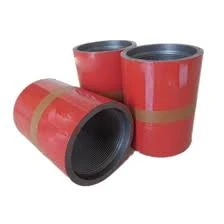- Afrikaans
- Albanian
- Amharic
- Arabic
- Armenian
- Azerbaijani
- Basque
- Belarusian
- Bengali
- Bosnian
- Bulgarian
- Catalan
- Cebuano
- Corsican
- Croatian
- Czech
- Danish
- Dutch
- English
- Esperanto
- Estonian
- Finnish
- French
- Frisian
- Galician
- Georgian
- German
- Greek
- Gujarati
- Haitian Creole
- hausa
- hawaiian
- Hebrew
- Hindi
- Miao
- Hungarian
- Icelandic
- igbo
- Indonesian
- irish
- Italian
- Japanese
- Javanese
- Kannada
- kazakh
- Khmer
- Rwandese
- Korean
- Kurdish
- Kyrgyz
- Lao
- Latin
- Latvian
- Lithuanian
- Luxembourgish
- Macedonian
- Malgashi
- Malay
- Malayalam
- Maltese
- Maori
- Marathi
- Mongolian
- Myanmar
- Nepali
- Norwegian
- Norwegian
- Occitan
- Pashto
- Persian
- Polish
- Portuguese
- Punjabi
- Romanian
- Russian
- Samoan
- Scottish Gaelic
- Serbian
- Sesotho
- Shona
- Sindhi
- Sinhala
- Slovak
- Slovenian
- Somali
- Spanish
- Sundanese
- Swahili
- Swedish
- Tagalog
- Tajik
- Tamil
- Tatar
- Telugu
- Thai
- Turkish
- Turkmen
- Ukrainian
- Urdu
- Uighur
- Uzbek
- Vietnamese
- Welsh
- Bantu
- Yiddish
- Yoruba
- Zulu
Exploring the Advantages of Steel Couplings in Modern Engineering Applications
Understanding Steel Coupling A Fundamental Aspect of Structural Engineering
In the realms of structural engineering and construction, the term steel coupling refers to a method of connecting structural elements, typically involving steel components. Steel coupling plays a crucial role in ensuring the stability and integrity of structures, particularly in complex frameworks where multiple elements must work in harmony. This article delves into the significance, types, applications, and benefits of steel coupling in modern engineering practices.
The Significance of Steel Coupling
Steel coupling serves as an essential mechanism to transmit forces between structural components, such as beams, columns, and braces. By providing a reliable connection, steel couplings help distribute loads evenly throughout a structure, mitigating the risks associated with uneven stress or localized failure. The design and implementation of these couplings are crucial in enhancing the overall resilience of a building.
In seismic-prone areas, for example, steel couplings can absorb and dissipate energy during an earthquake, reducing the likelihood of structural damage. The flexibility and strength of steel make it an ideal material for couplings, allowing structures to withstand not only static loads but also dynamic forces.
Types of Steel Couplings
There are several types of steel couplings, each with its unique design and purpose. The most common types include
1. Rigid Coupling This type of coupling creates a solid connection between two structural members, allowing them to act as a single unit. Rigid couplings are often used in situations where precise alignment and rigidity are necessary, such as in bridges and tall buildings.
2. Flexible Coupling In contrast, flexible couplings accommodate movement between connected members. This flexibility is particularly important in structures subjected to thermal expansion or seismic activity. Flexible couplings help mitigate stress and provide a buffer against potential damage.
3. Pinned Connection This connection allows for rotation between members while still providing sufficient strength to resist lateral forces. Pinned couplings are prevalent in truss systems, where they enable the structure to adapt to changing loads without compromising stability.
steel coupling

4. Moment-resisting Connection This type is designed to resist bending moments and is crucial in maintaining the structural integrity of buildings, especially those that are subject to lateral loads, such as wind or seismic forces.
Applications of Steel Coupling
The applications of steel coupling are vast and varied, spanning numerous sectors of construction and engineering. In high-rise buildings, steel couplings play a critical role in multi-story frames, where they connect columns and beams, ensuring stability under gravity loads as well as lateral forces. Similarly, in bridges, couplings are vital for distributing loads evenly, promoting longevity and safety.
In industrial settings, steel coupling is prevalent in the construction of warehouses and manufacturing facilities, where large open spaces necessitate robust structural connections. Moreover, in the field of renewable energy, steel couplings are integral to the construction of wind turbines and solar panel structures, enabling them to withstand environmental stressors while maintaining functionality.
Benefits of Steel Coupling
The advantages of using steel couplings are manifold. Firstly, they enhance structural performance by improving load distribution and stability. Secondly, steel couplings are durable and require minimal maintenance, making them a cost-effective choice for long-term projects. Additionally, the versatility of steel allows for various design possibilities, enabling engineers to create innovative solutions tailored to specific project requirements.
Moreover, the use of advanced engineering software and modeling techniques has revolutionized the design of steel couplings. Engineers can perform detailed analyses to optimize coupling designs, ensuring that they meet the required codes and standards while minimizing material waste.
Conclusion
In conclusion, steel coupling is an indispensable aspect of structural engineering that ensures the strength and stability of various constructions. As our understanding of engineering principles and materials evolves, the design and application of steel couplings will also advance, paving the way for safer, more resilient structures. Whether in high-rise buildings, bridges, or industrial facilities, steel coupling remains a cornerstone of modern construction practices, reflecting the synergy between creativity and engineering precision. By harnessing the power of steel couplings, engineers can build the robust and enduring structures that society relies on today and in the future.
-
Tubing Pup Joints: Essential Components for Oil and Gas OperationsNewsJul.10,2025
-
Pup Joints: Essential Components for Reliable Drilling OperationsNewsJul.10,2025
-
Pipe Couplings: Connecting Your World EfficientlyNewsJul.10,2025
-
Mastering Oilfield Operations with Quality Tubing and CasingNewsJul.10,2025
-
High-Quality Casing Couplings for Every NeedNewsJul.10,2025
-
Boost Your Drilling Efficiency with Premium Crossover Tools & Seating NipplesNewsJul.10,2025







